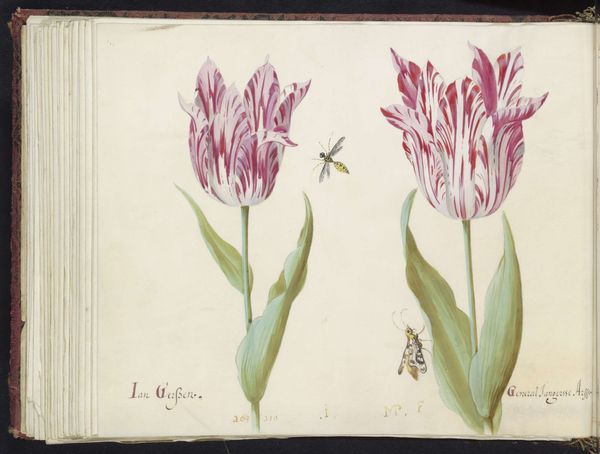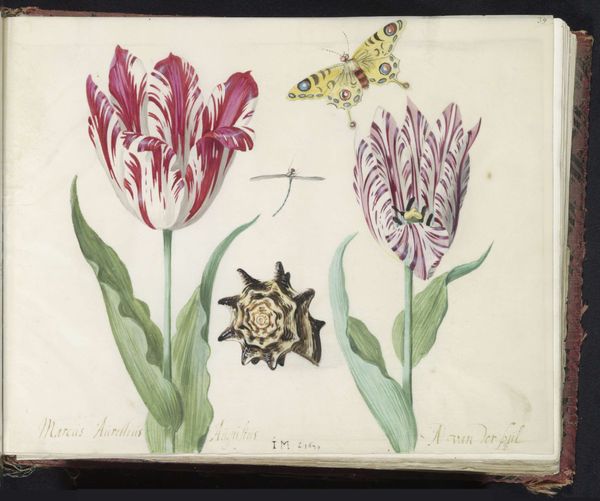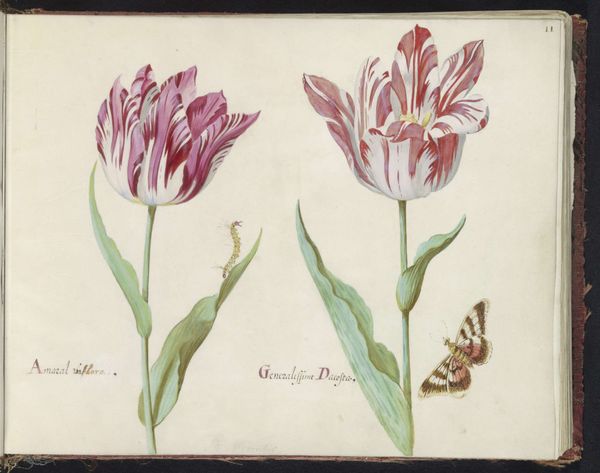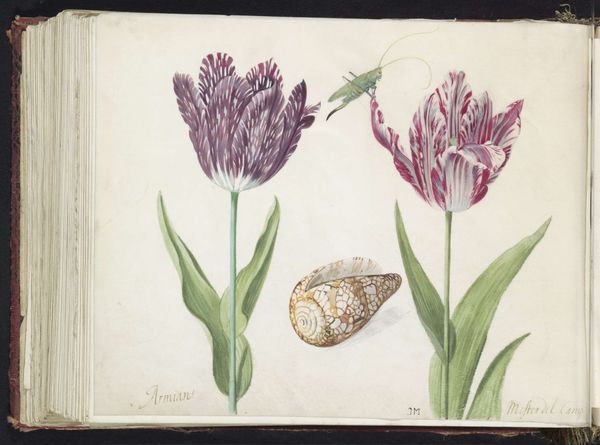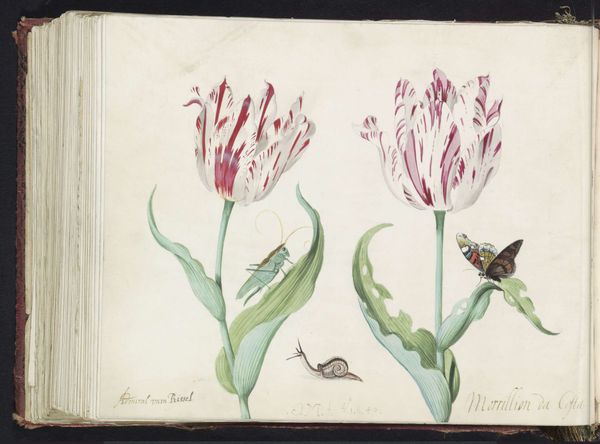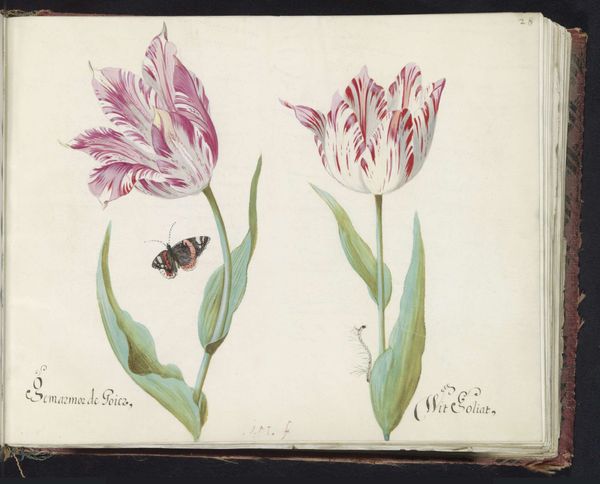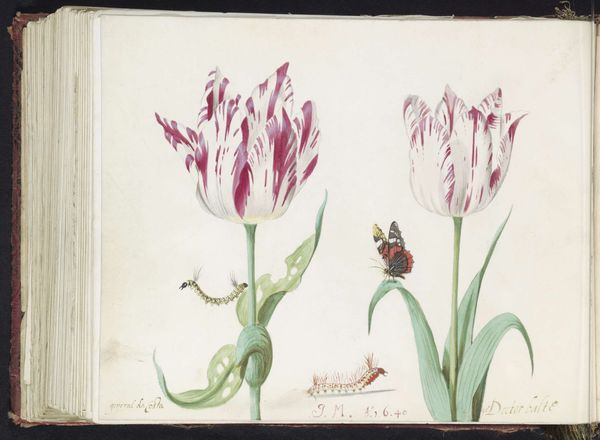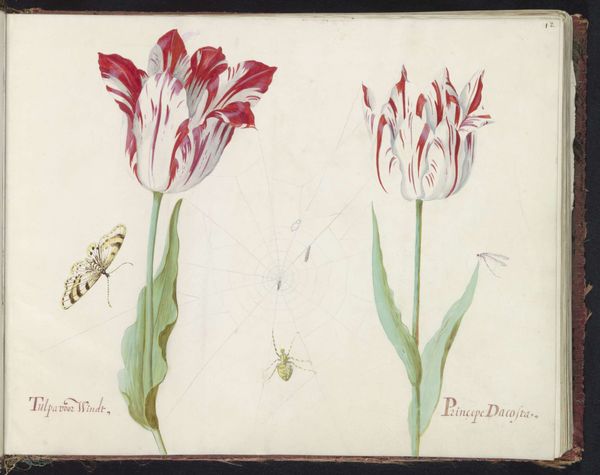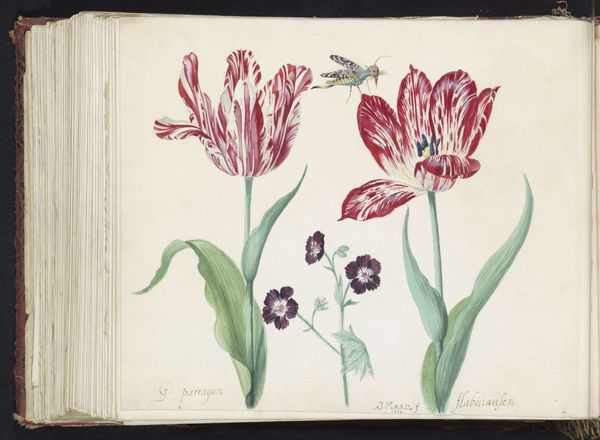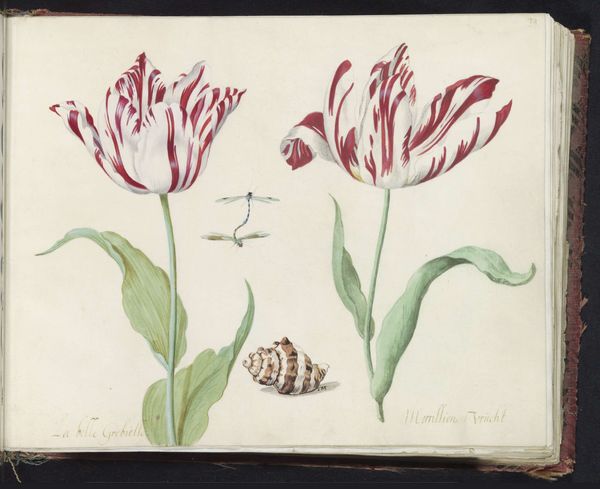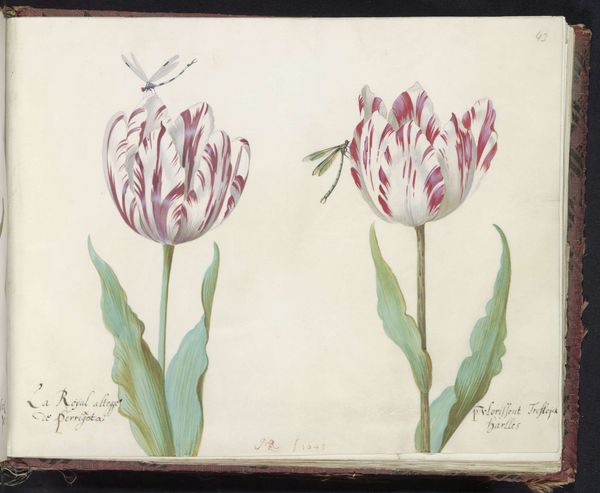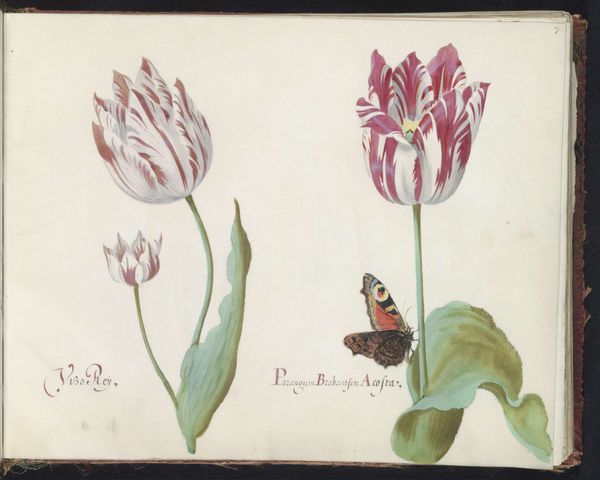
tempera, painting, watercolor
#
baroque
#
tempera
#
dutch-golden-age
#
painting
#
figuration
#
watercolor
#
coloured pencil
#
watercolour illustration
#
botanical art
Dimensions: height 265 mm, width 335 mm
Copyright: Rijks Museum: Open Domain
Jacob Marrel created this watercolor called 'Two Tulips with Shell, Butterfly, Spider, and Ladybug' sometime during the Dutch Golden Age. This was a period when the Netherlands saw an unprecedented boom in trade, science, and the arts. But it was also a time of rigid social hierarchies and nascent colonial expansion, all of which underpin this seemingly innocent botanical study. The tulips are not just flowers; they are symbols of wealth and status, reflecting the infamous "Tulip Mania" when single bulbs could cost more than houses. In contrast, the insects—the butterfly, spider, and ladybug—introduce a transient quality, reminding us of the fleeting nature of beauty and wealth. The shell, often seen as a symbol of pilgrimage, adds another layer of complexity. It suggests the exotic and the faraway, hinting at the global trade networks that fueled the Dutch economy. Marrel’s work operates in a world where the personal and political are inextricably linked. The painting is an emotional study of value, class, and the human desire for beauty, set against a backdrop of economic excess.
Comments
No comments
Be the first to comment and join the conversation on the ultimate creative platform.

